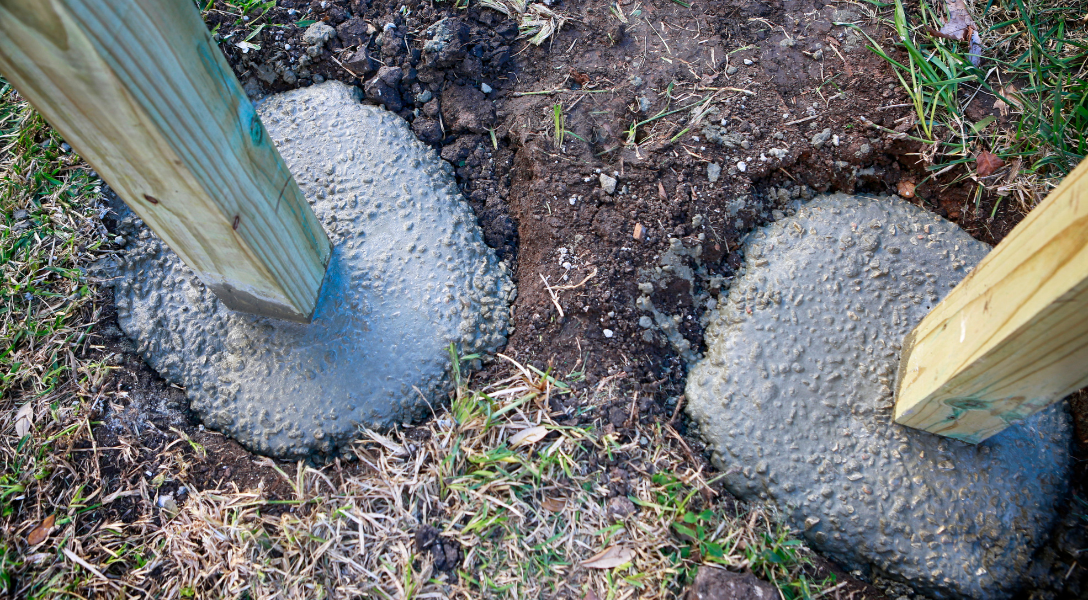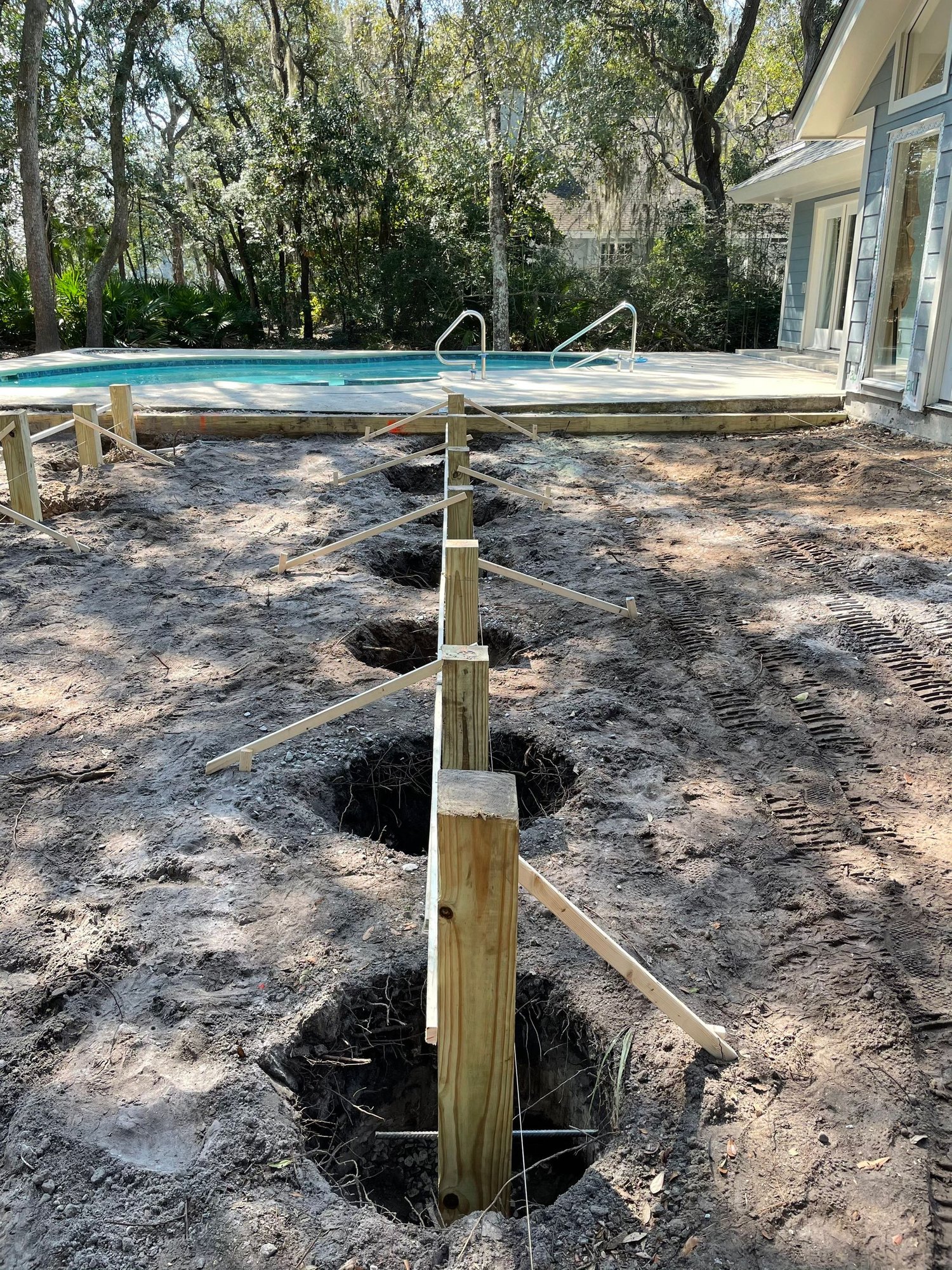Guarantee Stability and Longevity With Correctly Installed Deck Grounds
Deck grounds might not be the most extravagant facet of deck building and construction, but they play an essential duty in making certain security and longevity. Appropriately set up grounds offer a solid foundation for your deck, avoiding usual issues like drooping, changing, and even collapse. Choosing the best kind of ground and correctly installing it can be a complex process. In this discussion, we will discover the importance of proper deck footings, elements to consider throughout setup, various sorts of footings readily available, step-by-step installation overview, and upkeep ideas for ensuring resilient footings. So, if you intend to make certain the security and longevity of your deck, maintain checking out to discover the crucial insights to achieve a structurally sound and long lasting exterior area.

Relevance of Proper Deck Footings
Why are appropriately installed deck footings important for the security and durability of your deck? The response hinges on the fundamental function that deck grounds play in sustaining the weight of the whole framework. Deck footings are the structure on which the deck relaxes, moving the tons from the deck to the ground. When footings are not properly set up, it can bring about a variety of issues that compromise the security and longevity of the deck.
Firstly, properly installed deck grounds distribute the weight of the deck uniformly, preventing any type of unequal settling or sinking. This is particularly crucial in locations with unstable soil, as it assists to alleviate the risk of the deck collapsing or moving. Furthermore, well-installed footings make sure that the deck continues to be level, avoiding any structural damages that can happen when a deck ends up being uneven.
Second of all, correctly installed footings give a strong anchor for the deck, avoiding extreme activity and sway. This assists to maintain the architectural integrity of the deck, lowering the threat of mishaps or injuries. It additionally reduces the damage on the deck, permitting it to stand up to the aspects and regular use for a longer time period.
Variables to Think About for Deck Ground Setup
When setting up deck grounds, there are numerous essential elements to take into consideration for correct installation. These factors can greatly influence the stability and longevity of your deck. First and leading, you require to identify the sort of dirt on which the deck will certainly be developed. Various dirt types have various load-bearing abilities, so it is critical to carry out a dirt examination to make certain the grounds can support the weight of the deck and its residents. Additionally, the location and format of the deck must be very carefully intended to prevent any type of obstacles such as trees, utility lines, or underground pipelines. It is likewise essential to take into consideration the regional climate and climate condition, as these can affect the sturdiness of the grounds. Areas with a high water table may need extra measures to avoid water damage. The size and product of the grounds need to be picked based on the dimension and weight of the deck, as well as the neighborhood building codes and policies. By considering these factors, you can guarantee the correct installment of deck grounds and take pleasure in a secure and durable deck.
Kinds Of Deck Grounds to Pick From
There are several various kinds of deck grounds available for you to select from. Each type has its very own advantages and disadvantages, so it's necessary to consider your details requirements and the conditions of your deck before deciding.
One usual kind of deck footing is the concrete ground. This includes excavating openings in the ground and putting concrete into them to produce a strong foundation. Concrete footings are durable and supply excellent stability, making them appropriate for decks in areas with tough dirt conditions or high wind lots.
Another option is the helical pier ground, which is composed of a steel shaft with helical plates that are screwed right into the ground. These grounds are quick to install and can be used in numerous soil types, consisting of sandy or clay soils. They are also flexible, permitting for very easy leveling of the deck.
Sonotube footings are another popular option. These footings are created by placing a cardboard tube in an opening and filling it with concrete. Sonotube footings are relatively very easy to mount and offer sufficient stability for smaller decks or in locations with much less demanding soil conditions.

When selecting the kind of deck ground, it's critical to take into consideration elements such as soil conditions, deck dimension and weight, local building ordinance, and personal preferences. By selecting the appropriate footing kind, you can More about the author make certain the stability and longevity of your deck.
Step-by-Step Guide for Installing Deck Footings

Figure out the location: Start by noting the specific position of each ground using stakes and string (Deck Footings). Take into consideration visit the website any neighborhood building ordinance or laws concerning trouble distances
Dig the holes: Utilize an article hole miner or an auger to dig the holes for the footings. The depth will depend upon the frost line in your area and the sort of soil. Generally, a depth of a minimum of 36 inches is advised for stability.
Degree the holes: Make certain that the bottoms of the openings are degree (Deck Footings). This can be achieved by making use of a level or a straight board throughout the top of the holes
Include crushed rock: Place a layer of gravel at the base of each hole to enhance drainage and stop the footing from sinking right into the dirt gradually.
Put the ground types: Put the footing forms into the openings, guaranteeing they are focused and degree. Usage risks to protect them in position.
Mix and put concrete: Comply with the directions on the concrete mix bag to prepare the concrete. Pour the concrete right into the ground kinds, filling them entirely.
Smooth the surface area: Make use of a trowel to smooth the surface area of the concrete and get rid of any type of air pockets. Allow the concrete to heal according to the maker's directions.
Maintenance Tips for Resilient Deck Grounds
Correct upkeep is important for ensuring the longevity and security of deck footings. By frequently checking and preserving your deck footings, you can prevent damages and potential security dangers. One crucial aspect of maintenance is to frequently inspect for any kind of signs of damage, such as splits or activity in the grounds. If you observe any type of issues, it is vital to resolve them quickly to stay clear of additional damage.
Regular cleaning is additionally vital for maintaining deck footings. Particles, plant life, and dust can gather around the footings, which can result in moisture buildup and degeneration. Cleansing the footings regularly, using a brush or a stress washing machine, can assist avoid these concerns and expand the life-span of your deck.
Along with cleaning, it is very important to keep the area around the grounds clear of any blockages. Prevent stacking items versus their explanation the footings or allowing plants to expand as well near to them. These blockages can catch dampness and cause the footings to weaken with time.
Finally, normal resealing of the footings is recommended to shield them from moisture and various other environmental factors. Applying a water resistant sealer can help prevent water damages and prolong the lifespan of the footings.
Verdict
In final thought, proper setup of deck footings is crucial for guaranteeing stability and longevity of your deck. Variables such as dirt kind, tons capability, and regional building codes require to be taken into consideration when selecting the best sort of deck footings. Adhering to a detailed guide for setup and regular upkeep will certainly help to make certain the grounds continue to be durable and long-lasting.
In this conversation, we will certainly explore the relevance of correct deck grounds, variables to consider throughout setup, different kinds of footings available, step-by-step installment overview, and maintenance ideas for ensuring long-lasting grounds. Deck footings are the structure on which the deck rests, transferring the tons from the deck to the ground.One usual kind of deck footing is the concrete footing. Insert the ground forms: Put the ground develops right into the holes, ensuring they are focused and degree.In final thought, proper installment of deck grounds is critical for guaranteeing security and long life of your deck.
Comments on “Structure from scratch: The Ultimate Guide to Creating and Setting Up Deck Footings”